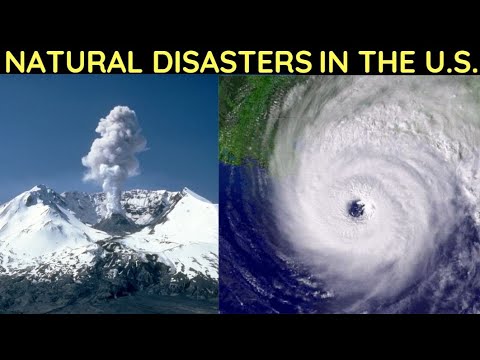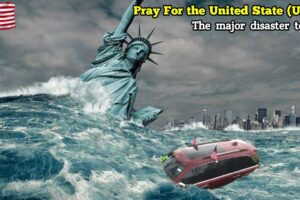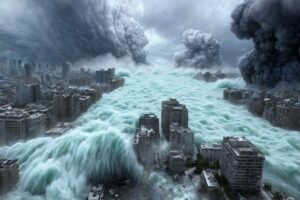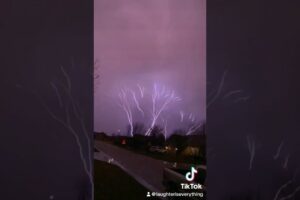
Examining natural disasters and hazards in the U.S. This is a discussion of where and why various disasters occur in different places as well as hazards affecting places you might not expect. I discuss hurricanes, tornadoes, flooding, earthquakes, tsunamis, and volcanoes. I worked in the field of emergency management for several years and take a nerdy look at this issue.
source







You’re awesome, thanks for all you do to educate us !
I know yal seen that sexy sexy c4 corvette in all that sand
Hello….man, I look forward to the howdy it's Kyle intro every time. Love the channel
Hey geography dude! Keep up the good work. Maybe a clarification. Largest forest fire in North American, for that matter the world, history; We all know about the Peshtigo Fire, same day as the Chicago fire in 1871, which killed the most people. But in terms of size the 1910 Idaho-Montana fire is always quoted as the largest, and considering acreage it is. But that's a superficial judgment. Here in Oregon and Washington the measure is board feet consumed, which is a horizontal AND vertical assessment. The largest by far is the 1902 Yacolt fire NE of Portland. Check it out. Who cares about acres, they might be scrub (by our standards) like in Colorado. Those aren't forests, they are woodlands, with scrawny trees and almost no underbrush. Don't lecture an Oregonian on the substance of forests. There is a full sized book about a man named Kinsey, a photographer who settled in Sedro Wooley, Washington, around 1910, who captured some of the old growth Doug Fir, red cedar, spruce and hemlock. Monsters, as large as the fabled Redwoods and Sequoia , almost beyond belief, continuous to BC and beyond. Yacolt burned 500,000 acres, yes; but 14 billion, not million, board feet of timber. The 1910 fire was relatively small compared. You'd think disaster experts such as yourself would understand the difference.
The loss of deer, bear, rodents, insects, birds, wolves, foxes, etc. could not be calculated. What do you think? To this day foresters in the NW apply "Yacolt" rules to prevent conflagrations. Don't worry about the big one earthquake. Worry about another Yacolt burning Portland to the ground.
Krakatoa
I remember losing about a month of the school year in 2004 due to 3 hurricanes hitting just weeks apart in Cental Florida. Natural disasters are no joke!
I lost my house in the Almeda fire on September 8, 2020.
You forgot asteroids. That's #1. Supervolcano #2. The rest are not even close to those
17:36 Actually terrorist acts can and have matched the damage scale of natural disasters, including floods. The monetary cost of 9/11, in which over 3,000 people were killled, is estimated well over $2 Trillion ($100 billion ignoring market lossss). The worst U.S. Hurricane in most of our lifetimes, Katrina, killed less than 2,000 people and caused under $200 billion in damage. The 2021 flooding in Europe are estimated to have cost $10 billion and killed under 300.
Another very good video! I'm always interested in the safest places to live. They are usually small areas and sometimes not where you would expect. For example, I live in a suburb of cleveland. Turns out this is a very safe place to live. No volcanos, some flooding in ohio but not around here, no forest fires, no huricanes, none of the other things you talked about except tornados. We did have a little earth quake a long time ago. It would also be great if you could include dangerous animals and insects, radon, and man made hazards like nuclear power plants. Also its kind of cold here. Its warm 5-6 months a year but I'd like a better climate than that, but a safe area, preferably in the eastern US.
I love this channel. Who needs HBO max when you have the Geography King.
No love for wildfires 🙁
Frankenmuth, Michigan is populated, and it is Christmas there year round!!! Look at the tornadoes that hit it.
Oklahoma now has earthquakes. Because tornado's weren't bad enough.
Wow I went so far back in time that Kyle addressed us with a “hello” to start the video instead of a “howdy”.
Nyc already had 2 hurricanes in the past decade so it's already hppened
Careful there Kyle. You're going to get cancelled if you keep dissing the media.
As we said in 1980: Don't go to Washington State this year, it's coming to you.
Astonishing how you are warning of climate change and just a few months after this video California actually gets hit with a hurricane.
I remember the tornado in Salt Lake City. I don’t live that far from there. I remember it caused a small media sensation, not because it was a big tornado (it was just an F2) but because Utah almost never gets tornadoes. For one to happen in downtown Salt Lake City was astonishing.
You don't consider wildfires natural disasters? They aren't all man-made.
Earthquakes in Oklahoma have not been noticeable for a few years, likely due to changes in the rules for injection wells.
That eruption in Iceland nearly stranded my family in Russia.
Ok I saw this missed on two of his videos that involved tornadoes and as an emergency management colleague, I feel inclined to mention it. A main reason why tornadoes are so dangerous in the South is due to the abundance of trees. In tornado alley, there is far less tree cover to obscure an approaching tornado. Also, the same tree cover that obscures views poses a threat to escape routes and access to emergency services.
crazy how this video predicted hurricane Sandy AND Harvey 😳
3:43 Where he mentions New York and New Jersey having to worry about hurricanes, but Sandy already came through 6 years before this video was made. Writing this in 2021, there have been many "close calls" with other really big storms that didn't reach NJ/NY at full strength or missed those states entirely. But it's definitely a very real trend ever since the late 2000s and early 2010s.
i cant even imagine a bad flood with feet of water. i live on the west coast, and accidentally left a tap on trickle overnight. by morning it had poured over the sink flooded the room and the room below, . not even an inch of water had built up, but it destroyed our flooring in both rooms, and the cieling between. its been months, and thousands of dollars later we still havent finished construction to fix it.
Hey Geography King, you might want to fact check your claim about Hurricanes becoming more frequent. From what I’ve heard, the higher category hurricanes are expected to become more frequent but hurricanes overall are expected to become less frequent as the climate changes. This still amounts to hurricanes as an issue overall becoming worse. But I think it’s important to accurately point out the subtlety of the situation. Especially given that a lot of climate change critics will cherry-pick the point that hurricanes are expected to become less common and leave out the fact that the more destructive and costly ones are expected to become more common. Context matters.
Nice video overall.
The only disaster I faced in my numerous visits to the US was Hurricane Irma, closed Orlando Airport despite the eye being over 100 miles away it was mental
Love this channel.
I grew up in New England. I love a good blizzard. I lived in California, not a fan of earthquakes, not fun, not advanced warning. I live in NYC now. For hurricanes, those who stay behind will evaluate vertically.